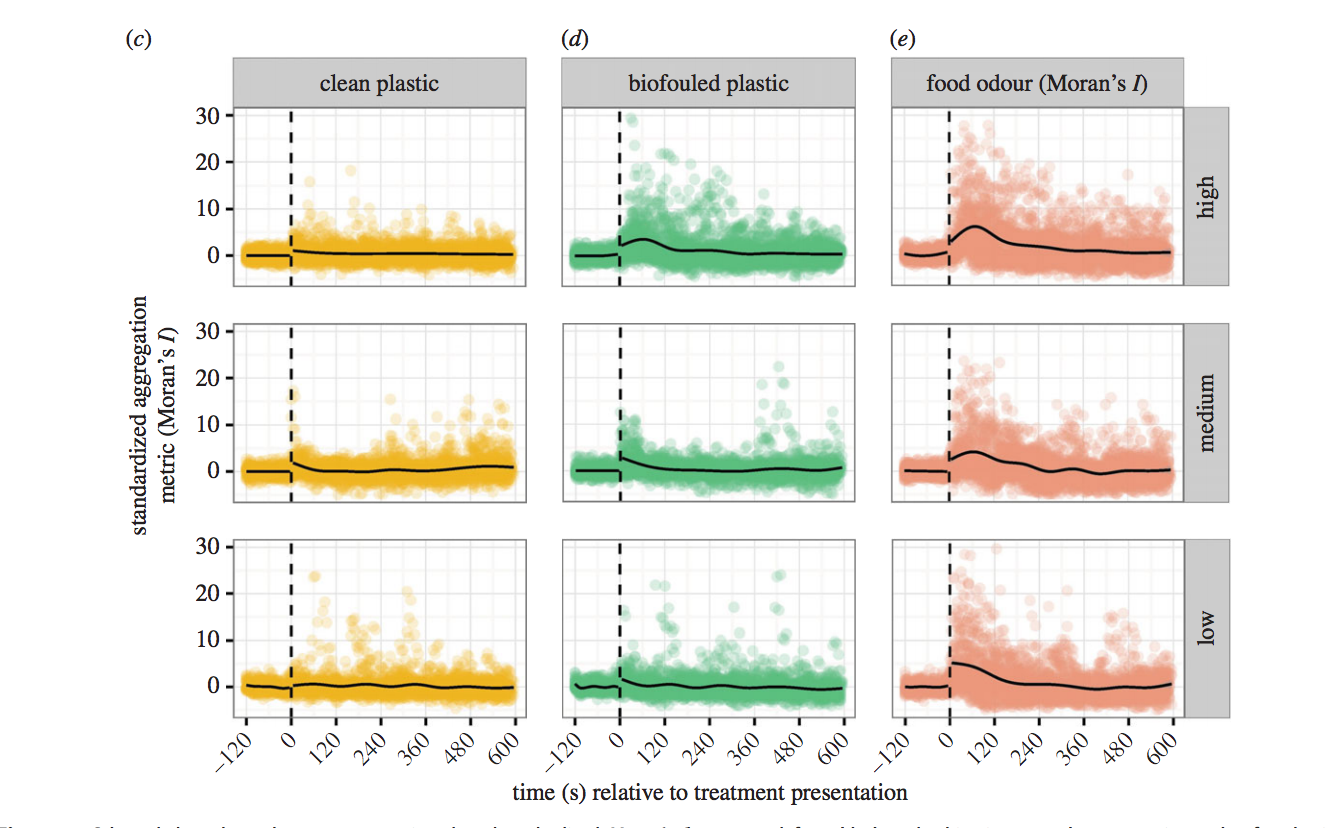We’re Eating Fish That Are Eating Plastic That Smells Like Food
Credit to Author: Kaleigh Rogers| Date: Tue, 15 Aug 2017 23:00:00 +0000
As long as humans have been dumping plastic trash into the ocean, sea creatures have been eating it. It sucks—plastic can be toxic, and animals that eat it can be malnourished and have impaired behavior—but their taste for plastic has also stumped scientists for a long time. Why would they eat something that isn’t food?
Now, a new study shows the smell of tiny microorganisms that colonize plastic in the ocean tricks fish into chomping on it, and helps explain why tiny bits of plastic are making their way up to food chain and to our own guts.
“Isn’t that the most ironic and Shakespearean twist to all of this?” said Matthew Savoca, research fellow at the National Oceanic and Atmospheric Administration and co-author of the study. “We put all this junk out into the ocean and then, of course, we get a lot of our sustenance from that ocean. Healthy oceans equal healthy human populations as well.”
Savoca and his colleagues wanted to test whether or not the smell of plastic had some kind of effect on fish’s behavior, so they collected colonies of anchovies to run through their smell test. The fish tanks were injected with either a control stimulus (just regular salt water) or one of three test stimuli: water that had been scented with clean plastic, water scented with plastic that had sat in the ocean for three weeks, and water that had been scented with krill—a tiny crustacean that anchovies love to eat. They also tried giving the anchovies an injection of krill, to get a baseline of how they react to their favorite snack.
They found that the anchovies barely reacted at all to the plain water, or to the water scented with clean plastic. However, the fish’s behavior changed noticeably when presented with the ocean-soaked plastic-scented water. In fact, it closely resembled the reaction the fish had to food-scented water, and actual food. In response to both the ocean-logged plastic and the krill, the fish would bunch together and start scrambling. Typically, the anchovies like to swim against the flow of water, but in both of these scenarios, they’d stop this and dash around the tank seeking out the stimulus.

The difference with the water-logged plastic is that it had been coated with tiny ocean microorganisms in a process known as biofouling. No matter how “clean” a piece of plastic is when it gets tossed in the ocean, over time it will eventually become biofouled. This masks the true odor of the plastic and makes it smell a lot more like a tasty treat, which partly explains why fish eat it, but don’t eat other foreign substance like rocks, metal, or wood. Savoca said the tiny bits of plastic might also visually resemble food, providing a double deception for unwitting fish friends.
Though eating plastic has negative health effects on fish, they don’t typically die from eating it, which means there could be a chance these small plastic particles are making their way up the food chain into the fish humans eat. In other words: we might be getting our plastic back from the ocean, whether we mean to or not.
“It’s a sad connection but, unfortunately, for a lot of people what gets them interested or concerned is when it might actually affect them,” Savoca told me. “People are sad about what happens to animals but they might not think it’s the end of the world. But if we’re eating toxic fish, that’s a problem.”
Get six of our favorite Motherboard stories every day by signing up for our newsletter.